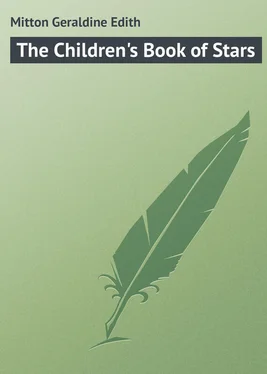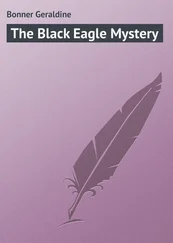Geraldine Mitton - The Children's Book of Stars
Здесь есть возможность читать онлайн «Geraldine Mitton - The Children's Book of Stars» — ознакомительный отрывок электронной книги совершенно бесплатно, а после прочтения отрывка купить полную версию. В некоторых случаях можно слушать аудио, скачать через торрент в формате fb2 и присутствует краткое содержание. Издательство: Иностранный паблик, Жанр: foreign_prose, foreign_children, foreign_language, на английском языке. Описание произведения, (предисловие) а так же отзывы посетителей доступны на портале библиотеки ЛибКат.
- Название:The Children's Book of Stars
- Автор:
- Издательство:Иностранный паблик
- Жанр:
- Год:неизвестен
- ISBN:нет данных
- Рейтинг книги:5 / 5. Голосов: 1
-
Избранное:Добавить в избранное
- Отзывы:
-
Ваша оценка:
- 100
- 1
- 2
- 3
- 4
- 5
The Children's Book of Stars: краткое содержание, описание и аннотация
Предлагаем к чтению аннотацию, описание, краткое содержание или предисловие (зависит от того, что написал сам автор книги «The Children's Book of Stars»). Если вы не нашли необходимую информацию о книге — напишите в комментариях, мы постараемся отыскать её.
The Children's Book of Stars — читать онлайн ознакомительный отрывок
Ниже представлен текст книги, разбитый по страницам. Система сохранения места последней прочитанной страницы, позволяет с удобством читать онлайн бесплатно книгу «The Children's Book of Stars», без необходимости каждый раз заново искать на чём Вы остановились. Поставьте закладку, и сможете в любой момент перейти на страницу, на которой закончили чтение.
Интервал:
Закладка:
The earth is not the only planet which has a moon, or as it is called, a satellite, in attendance. Some of the larger planets have several, but there is not one to compare with our moon. Which would you prefer if you had the choice, three or four small moons, some of them not much larger than a very big bright star, or an interesting large body like our own moon? I know which I should say.
'You say that the moon broke off from the earth, so perhaps there may be some people living on her,' I hear someone exclaim.
If there is one thing we have found out certainly about the moon, it is that no life, as we know it, could exist there, for there is neither air nor water. Whether she ever had any air or water, and if so, why they disappeared, are questions we cannot answer. We only know that now she is a dead world. Bright and beautiful as she is, shedding on us a pale, pure light, in vivid contrast with the fiery yellow rays of the sun, yet she is dead and lifeless and still. We can examine her surface with the telescope, and see it all very plainly. Even with a large opera-glass those markings which, to the naked eye, seem to be like a queer distorted face are changed, and show up as the shadows of great mountains. We can only see one side of the moon, because as I have said, she keeps always the same face turned to the earth; but as she sways slightly in her orbit, we catch a glimpse of sometimes a little more on one side and sometimes a little more on the other, and so we can judge that the unseen part is very much the same as that turned toward us.
At first it is difficult to realize what it means to have no air. Besides supporting life in every breath that is drawn by living creatures, the air does numerous other kind offices for us – for instance, it carries sound. Supposing the most terrific volcano exploded in an airless world, it could not be heard. The air serves as a screen by day to keep off the burning heat of the sun's rays, and as a blanket by night to keep in the heat and not let it escape too quickly. If there were no air there could be no water, for all water would evaporate and vanish at once. Imagine the world deprived of air; then the sun's rays would fall with such fierceness that even the strongest tropical sun we know would be as nothing in comparison with it, and every green thing would shrivel up and die; this scorching sun would shine out of a black sky in which the stars would all be visible in the daytime, not hidden by the soft blue veil of air, as they are now. At night the instant the sun disappeared below the horizon black darkness would set in, for our lingering twilight is due to the reflection of the sun in the upper layers of air, and a bitterness of deathly cold would fall upon the earth – cold fiercer than that of the Arctic regions – and everything would be frozen solid. It would need but a short time to reduce the earth to the condition of the moon, where there is nothing to shrivel up, nothing to freeze. Her surface is made up of barren, arid rocks, and her scenery consists of icy black shadows and scorching white plains.
The black shadows define the mountains, and tremendous mountains they are. Most of them have craters. A crater is like a cup, and generally has a little peak in the middle of it. This is the summit of a volcano, and when the volcano has burst up and vomited out floods of lava and débris, this has fallen down in a ring a little distance away from it, leaving a clear space next to the peak, so that, as the mountain ceases vomiting and the lava cools down, the ring hardens and forms a circular ridge. The craters on the moon are immense, not only in proportion to her size, but immense even according to our ideas on the earth. One of the largest craters in our own world is in Japan, and this measures seven miles across, while in the moon craters of fifty, sixty, and even a hundred miles are by no means uncommon, though there are also hundreds and thousands of smaller ones. We can see the surface of the moon very plainly with the magnificent telescopes that have now been made, and with the best of these anything the size of a large town would be plainly visible. Needless to say, no town ever has been or ever will be seen upon the moon!
All these mountains and craters show that at one time the moon must have been convulsed with terrific disturbances, far worse than anything that we have any knowledge of on our earth; but this must have been ages ago, while the moon still probably had an atmosphere of its own. Now it has long been quiet. Nothing changes there; even the forces that are always at work on the earth – namely, damp and mould and water – altering the surface and breaking up the rocks, do not act there, where there is no moisture of any sort. So far as we can see, the purpose of the moon is to be the servant of the earth, to give her light by night and to raise the tides. Beautiful light it is, soft and mysterious – light that children do not often have a chance of seeing, for they are generally in bed before the moon rises when she is at the full.
We know that the moon has no heat of her own – she parted with all that long ago; she cannot give us glowing light from brilliant flames, as the sun does; she shines only by the reflection of the sun on her surface, and this is the reason why she appears to change her shape so constantly. She does not really change; the whole round moon is always there, only part of it is in shadow. Sometimes you can see the dark part as well as the bright. When there is a crescent moon it looks as if it were encircling the rest; some people call it, 'seeing the old moon in the new moon's arms.' I don't know if you would guess why it is we can see the dark part then, or how it is lighted up. It is by reason of our own shining, for we give light to the moon, as she does to us. The sun's rays strike on the earth, and are reflected on to the moon, so that the moon is lighted by earthshine as we are lighted by moonshine, and it is these reflected earth-rays that light up the dark part of the moon and enable us to see it. What a journey these rays have had! They travel from the sun to the earth, and the earth to the moon, and then back to the earth again! From the moon the earth must appear a much bigger and more glorious spectacle than she does to us – four times wider across and probably brighter – for the sun's light strikes often on our clouds, which shine more brilliantly than her surface.
Once again we must use an illustration to explain the subject. Set a lamp in the middle of a dark room, and let that be the sun, then take a small ball to represent the earth and a smaller one for the moon. Place the moon-ball between the lamp and the earth-ball. You will see that the side turned to the earth-ball is dark, but if you move the moon to one side of the earth, then from the earth half of it appears light and half dark; if you put it right away from the lamp, on the outer side of the earth, it is all gloriously lit up, unless it happens to be exactly behind the earth, when the earth's shadow will darken it. This is the full explanation of all the changes of the moon.
Does it ever fall within the earth's shadow? Yes, it does; for as it passes round the earth it is not always at the same level, but sometimes a little higher and sometimes a little lower, and when it chances to pass exactly behind it enters the shadow and disappears. That is what we call an eclipse of the moon. It is nothing more than the earth's shadow thrown on to the moon, and as the shadow is round that is one of the proofs that the earth is round too. But there is another kind of eclipse – the eclipse of the sun; and this is caused by the moon herself. For when she is nearest to the sun, at new moon – that is to say, when her dark side is toward us, and she happens to get exactly between us and the sun – she shuts out the face of the sun from us; for though she is tiny compared with him, she is so much nearer to us that she appears almost the same size, and can blot him right out. Thus the eclipses of both sun and moon are not difficult to understand: that of the moon can only happen at full moon, when she is furthest from the sun, and it is caused by the earth's shadow falling upon the moon; and that of the sun at new moon, when she is nearest to him, and it is caused by the solid body of the moon coming between us and the sun.
Читать дальшеИнтервал:
Закладка:
Похожие книги на «The Children's Book of Stars»
Представляем Вашему вниманию похожие книги на «The Children's Book of Stars» списком для выбора. Мы отобрали схожую по названию и смыслу литературу в надежде предоставить читателям больше вариантов отыскать новые, интересные, ещё непрочитанные произведения.
Обсуждение, отзывы о книге «The Children's Book of Stars» и просто собственные мнения читателей. Оставьте ваши комментарии, напишите, что Вы думаете о произведении, его смысле или главных героях. Укажите что конкретно понравилось, а что нет, и почему Вы так считаете.












